
Structure
Deformation or strain (deformation caused
by stress)
The
original shape or volume or both
have been altered by stress.
There
are three kind of stress:
-
Compressional
stress
rocks
are squeezed or compressed by
external
forces directed toward one an other. (shortening)

After:http://www.educ.uvic.ca/Faculty/jtinney/earth%20science/Compr.html
-Tensional
stress:
Forces
acting in opposite direction along the same line
(lengthening)
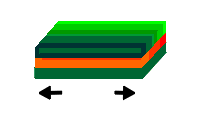
After:http://www.educ.uvic.ca/Faculty/jtinney/earth%20science/Compr.html
-Shear
stress:
Forces
act parallel to each other but opposite direction resulted in displacement along
closely spaced planes
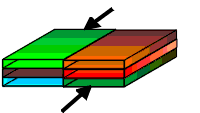
After:http://www.educ.uvic.ca/Faculty/jtinney/earth%20science/Compr.html
As all together:

Strain
can be:
-elastic
if the
deformed rocks return to their original shape when stresses are relaxed
(squeezing tennis ball)
-Rocks
that are strained beyond their elastic limit are deformed, and can not recover
their original shape.
either
elastic: fold (ductile)
or
brittle: fracture
The
type of strain depends on:
-kind
of stress
-the
amount of pressure
-temperature
-rock
type
-length
of time
STRIKE
and DIP
Strike
Strike
is the direction of a line formed by the intersection of a horizontal plain with
an inclined plain such as a rock layer. The orientation of the strike line is
defined by a compass to measure its angle in respect to North.
Dip
Dip is
the measure of the maximum angular deviation of an inclined plane from the
horizontal, so it must be measured perpendicular to the strike direction

After:
http://www.bhc.edu/academics/science/harwoodr/Geol101/study/structur.htm
FOLDS
Folds
are plasticly streained deformation. It is usually heppening deeper in the
crust, because rocks which are close to the surface are usually brittle.
Monocline
(simple bend)
Anticline (up-arched fold)
Syncline
(downarched fold)
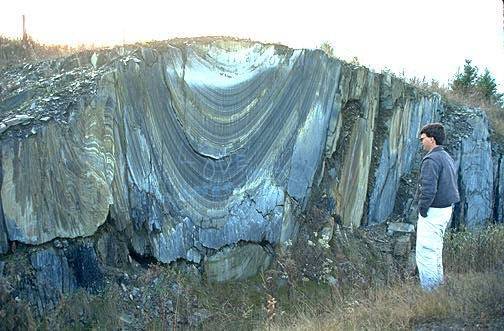

after:http://www.geog.ouc.bc.ca/physgeog/contents/10l.html
Symmetrical
assymetrical

after:http://www.geog.ouc.bc.ca/physgeog/contents/10l.html
overturned
fold
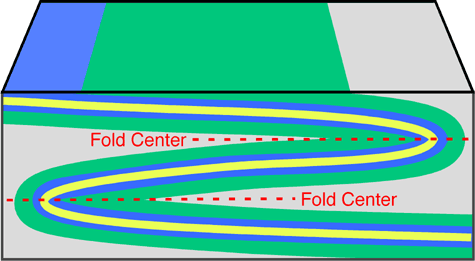
after:http://www.geog.ouc.bc.ca/physgeog/contents/10l.html
Domes

After:http://www.bhc.edu/academics/science/harwoodr/Geol101/study/structur.htm
basins
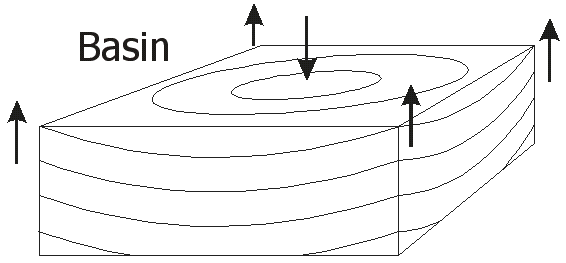
After:http://www.bhc.edu/academics/science/harwoodr/Geol101/study/structur.htm
FAULTS
Fault
are frsactures along which movement has occured parallel to the fracture
surface.
Fault
plane is the fault surface along which the movement occurs.
Hanging
wall
footwall
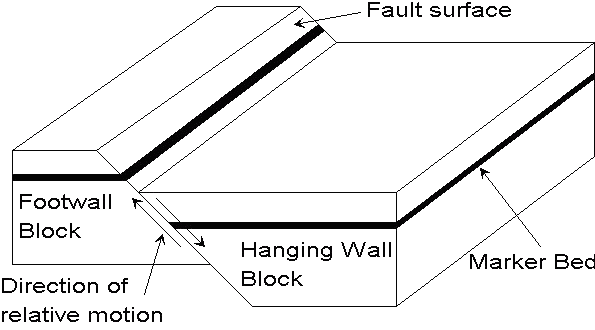
After:http://www.bhc.edu/academics/science/harwoodr/Geol101/study/structur.htm
NORMAL
FAULT (tensional force)
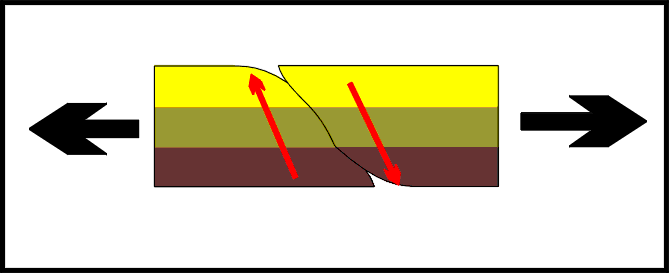
After:http://www.educ.uvic.ca/Faculty/jtinney/earth%20science/Compr.html
Reverse
fault (compressional force)
After:http://www.educ.uvic.ca/Faculty/jtinney/earth%20science/Compr.html
thrust
fault
Type of
reverse fault, where the dip of fault plane is less than 45°.
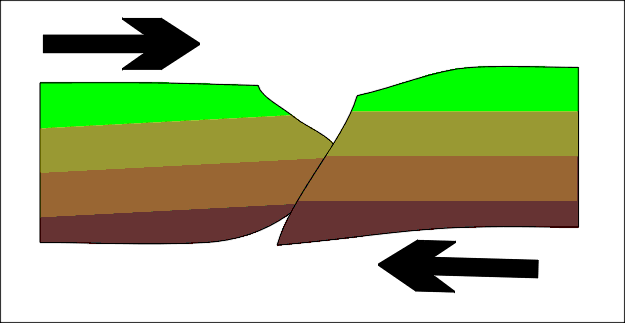
After:http://www.educ.uvic.ca/Faculty/jtinney/earth%20science/Compr.html
Strike
slip faults
Shering force (San andreas)
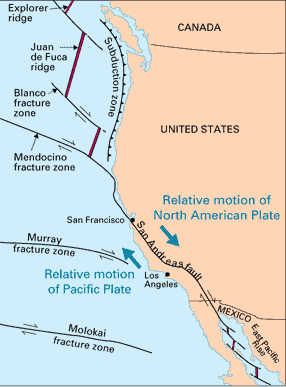
http://www.geog.ouc.bc.ca/physgeog/contents/10l.html
Right
or left lateral)